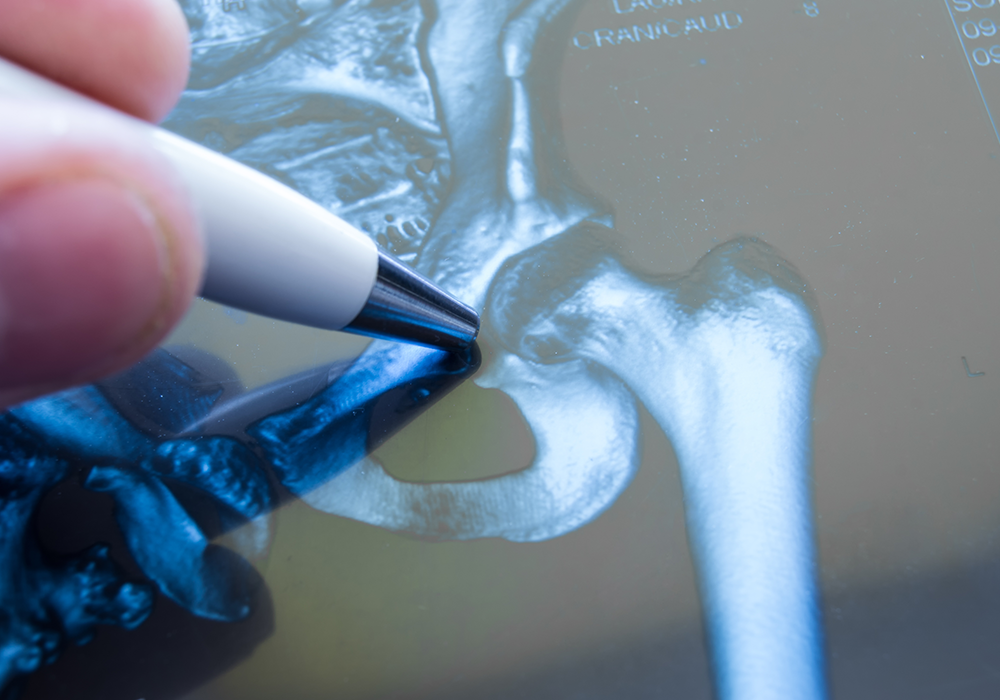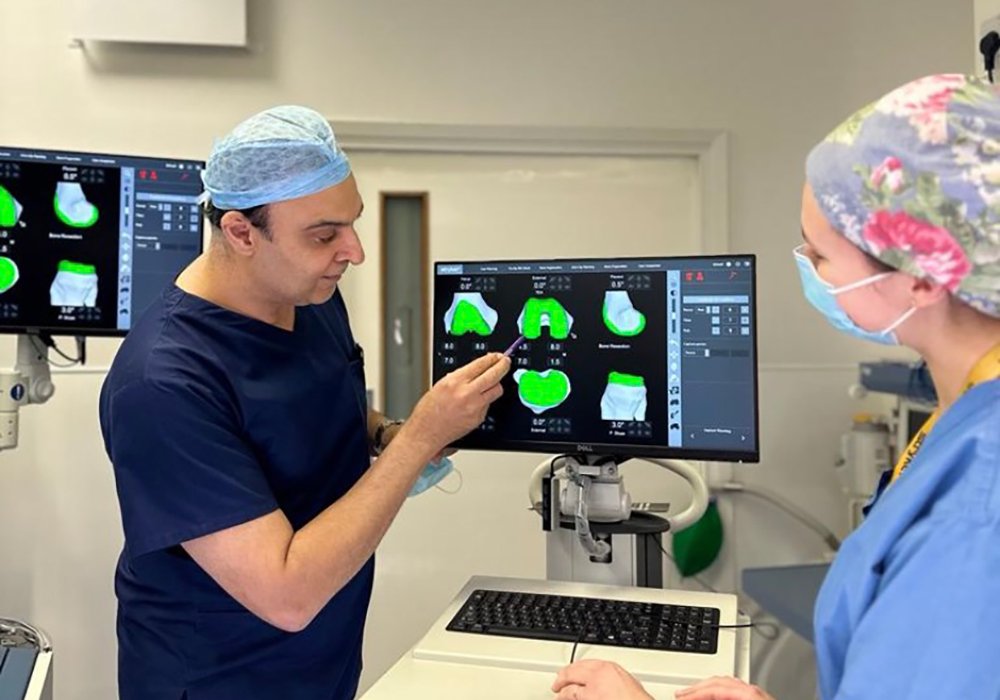I am one of a few Orthopaedic Robotic Surgeons in the UK currently using this revolutionary technique Mako robotic-arm assisted surgery for total knee and hip replacements.
I warmly welcome this state-of-the-art technology to Spire South Bank Hospital in Worcester. In this article I explain what Mako is, how it works and the advantages of using the robot.
What is Mako robotic arm technology?
Stryker has developed Mako robotic-arm assisted technology taking surgery into the next generation. The Company worked alongside Orthopaedic Surgeons to design an innovative system, that can be used to pre-plan joint replacements procedures using a CT-based 3D scan of the patients unique anatomy. Mako assists with more accurate positioning of standard implants, which help to improve clinical outcomes.
How does Mako work?
Before surgery, patients have a CT-based scan of the damaged joint. A 3D virtual model of their unique anatomy is loaded into the Mako system software and used to create a personalised pre-operative plan. During surgery, I guide the robotic arm, using it to prepare the joint to receive the prosthetic implant.
The Mako system supports me to remain within the pre-defined area of the joint, so only damaged or diseased tissue is removed. As a result, the implant is positioned in precisely the right place and as much of the patient’s natural joint as possible is retained. If a revision joint replacement is needed at a future date to replace a worn-out prosthesis, then having had an initial Mako assisted joint replacement can reduce the risk of complications and ensure better outcomes.
What are the rewards of Mako robotic-arm assisted surgery?
The rewards of having a Mako procedure include:
- Accuracy– Because the system allows me to create a personalised surgical plan, implants are positioned with even greater accuracy. This is important as even fractional misalignment can cause pain, discomfort and reduced performance.
- Safety– The Mako system supports my skill, helping me to remain within the area identified in their pre-operative planning stage and reducing the chances of human error.
- Minimising stress on soft tissues– Mako maps the natural movement patterns of the joint to reduce stress on soft tissues and ligaments and ensure the joint can move naturally using the artificial implant.
- Fewer complications –Results show fewer prosthesis complications after surgery and shorter rehabilitation times. There may also be reduced blood loss as there is less unnecessary exposed bone surface.
- Reduced risk of implant failure –Improving accuracy helps to reduce the risk of implant failure and potentially the need for revision surgery in the future.
Are there any risks with Mako robotic surgery?
All surgery carries risks and Mako robotic arm assisted hip and knee replacements are no exception. I will discuss any potential risks with you but they include:
- Infection– Because a Mako procedure may take slightly longer than a traditional joint replacement, the theoretical risk of infection may be higher.
- Human skill– The quality of the initial CT-based scan and the proficiency of the surgical team will impact on the outcomes achieved from the Mako system..
- New technology– Any new technology will have only early evidence data. However, Mako has been used since 2006 and there is an ever-growing evidence database within the orthopaedic literature. The implants used are tried and tested prostheses, which negates any additional risks of surgeries using patient specific custom-made prostheses.
To book a consultation or for further information, contact:
Mr Nadim Aslam, Orthopaedic Robotic Surgeon, of the Worcestershire Knee & Hip Clinic
✉ info@wkhc.co.uk
☏ 01905 362003






